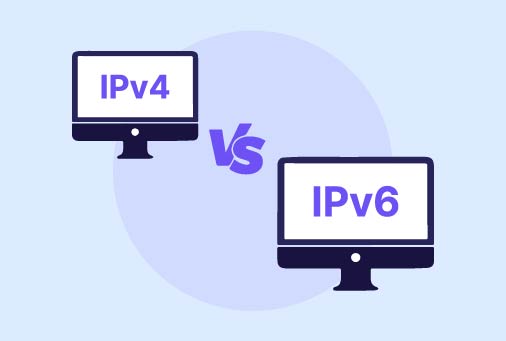
How to Identify a USPS Text Scam – Everything You Need To Know
USPS scams are increasingly rampant, particularly in the form of misleading text messages. Such scam messages tend to deceive individuals into opening malicious links by claiming they are from USPS regarding the delivery of a package. In this blog post, we will guide you through the process by which these scams typically take place, how to identify spoofed messages, and what actual USPS tracking text messages look like, so you can remain safe from being scammed.
What Is a USPS Scam?
A USPS scam is when somebody sends you a bogus message purporting to be from the U.S. Postal Service in an effort to steal your personal or financial information. They typically appear as text messages, emails, or robocalls and state something about there being an issue with your delivery or that they need you to verify your address.
Scammers are sneaky; they employ official-looking logos, spoof tracking links, and threatening messages in order to impersonate and trick you into clicking or divulging sensitive information. That’s how difficult they are to detect.
The best protection is being aware. Being aware of how these scams operate and being trained with tools such as phishing simulations can help you really steer clear of falling for one.
How a USPS Text Scam Operates
USPS text scams are bogus texts that appear to be from the United States Postal Service. They typically read “You missed a delivery” or “Please verify your address.” Their aim? To have you click on a link that sends you to a phony website in an attempt to extract your personal details.
Scammers employ clever tactics to create these messages to appear legitimate:
- False narratives (Pretexting): They invent realistic scenarios, such as a package that can’t be delivered, to draw your attention.
- False sender identity (SMS Spoofing): They alter the sender name or number to create the appearance that the message comes from USPS.
This type of scam is referred to as smishing, a shortened form of SMS phishing. These messages usually direct you to sites that are almost identical to the actual USPS website, but they are not. It is an attempt to gather sensitive data such as your name, address, credit card number, or even request small amounts of money for “redelivery.”
Once scammers get your details, they can sell them on the dark web or use them for identity theft. That’s why it’s important to know how to spot these scams and stay one step ahead.
How to Spot a USPS Scam Text
It’s not always simple to identify a scam, but spotting the red flags early can save you from losing money or sensitive information. Here’s what to watch out for if you receive a suspicious message purporting to be from USPS:
- Poor grammar and spelling errors: Genuine USPS messages are well-written and free from errors. If the message arrives with glaring mistakes or odd punctuation, it’s likely bogus.
- Money warning: USPS never sends a text stating you’ve received a large check or money order. If you receive a text with that info, it’s a scam—just ignore it.
- Scary threats: Texts threatening that you’ll be reported or taken to court because of a package problem are not real. USPS never threatens individuals like that via text.
- Rush schemes: Fraudsters enjoy creating a sense of urgency. They may tell you that you only have 24 hours to respond before a package is shipped back. This is a scam.
- Unusual tracking numbers: Genuine USPS tracking numbers are 20 digits long or 13 characters long (e.g., “US 123 456 789 US”). Is anything strange? Don’t believe it.
- Unusual-looking addresses: USPS employs correct name and address formatting. If it looks weird or off in the message, it’s likely spam.
- Text from an unknown number: Legitimate USPS texts will identify as being from “USPS”—not a random phone number. If the sender’s just some random cell number, that’s your cue to delete it.
By watching out for these indicators, you will be able to identify a scam before it can do damage. Always double-check before you click anything, and if unsure, go straight to the official USPS website.
Warning Signs of An Impostor USPS Text
- It contains a link – USPS will never send clickable links via text message.
- It requests a redelivery fee – That’s a warning sign. USPS doesn’t charge to redeliver packages.
- Bad spelling or strange grammar – Official USPS communications are well-spelled and error-free.
- It pushes you to act quickly. Con artists usually try to create a sense of urgency to obtain your personal information, such as your home address.
- The tracking number is absent or fake – If the number does not appear on the official USPS website, it is a scam.
How to Protect Yourself From USPS Scams
The best way to stay safe from USPS scam texts is to not interact with them at all. Don’t click, don’t reply—just delete the message. Before doing anything, take a moment to think and double-check things like the tracking number on the official USPS website.
Here are some easy ways to protect yourself:
- Pause and think first.
Even if you are a subscriber to USPS text messages, always verify that the message is actually from them. Check out the sender on the internet if you are not sure.
- Don’t click links or open files.
Spam texts tend to carry malware in links or attachments. Opening them could damage your device. If you happened to click inadvertently, perform a security scan immediately.
- Never respond to suspicious messages.
Responding can notify spammers that your phone is in service, prompting them to send you even more spam. Simply delete the message and block the number.
- Check your phone bill.
If you’ve received a high volume of spam messages lately, look at your phone bill for strange charges. It might be a hint that someone is using your number without your permission.
- Install a reputable antivirus app.
Using good antivirus software on your phone can protect against malicious links, detect malware, and safeguard you against the insidious threats found in fake messages.
Remaining vigilant and being careful will go a long way towards safeguarding your personal information.
How to Report a USPS Scam Text
If you’ve received a suspicious USPS text, don’t delete it—report it. Reporting the scam to the correct people can assist in safeguarding others as well.
Here’s what you do:
- Send the message to 7726 (it spells “SPAM” on your phone).
- Email a screenshot or information about the scam to: [email protected] (United States Postal Inspection Service).
You may also report it through:
- The Federal Trade Commission (FTC) by completing their online complaint form.
- The Internet Crime Complaint Center (IC3) is where you should report internet scams.
Reporting the scams goes a long way in assisting the authorities in tracking down the fraudsters and alerting others before they are conned too.
Does USPS Send Texts?
USPS won’t just send you text messages out of the blue. You’ll only receive them if you request status updates, either by registering on their site or texting 28777 (2USPS) yourself.
For instance, if you text the word “Delivery” plus your tracking number to 28777, USPS will respond with information regarding the status of your package.
What a legitimate USPS text will look like:
- Your tracking number
- The status of delivery (such as “out for delivery” or “delivered”)
- Date, time, and place for pickup (if necessary)
Important: These messages will never contain a link. If the message contains a link, it is a scam. Always double-check before clicking on something.
What to Do If You Fall for a USPS Text Scam
If you’ve shared personal or financial info through a fake USPS text, don’t panic, but act quickly. First, secure your USPS account and any others with the same login. Change your passwords, use a password manager, and enable two-factor authentication for extra protection.
If you provided payment details, call your bank immediately and report your card frozen, and look for odd charges. You may also freeze your credit to keep identity thieves at bay and scan your computer for viruses if you click on links.
Lastly, report the scam to your police department, the FTC, and USPIS. Acting quickly keeps you safe and aids in efforts to thwart scammers.
Conclusion
Knowing about USPS text scams and how to identify them is the most important way to safeguard your personal data. Verify messages diligently every time, don’t click on unknown links, and report if you find any scams. Quick and intelligent action can prevent you from falling into a trap of fraud and keep your data safe. Finally, never miss using a reliable VPN like iProVPN to safeguard your data while browsing.
iProVPN encrypts your data for protection against hackers and surveillance. Unblock your favorite streaming platforms instantly with the best VPN for streaming.
Start Browsing Privately!




